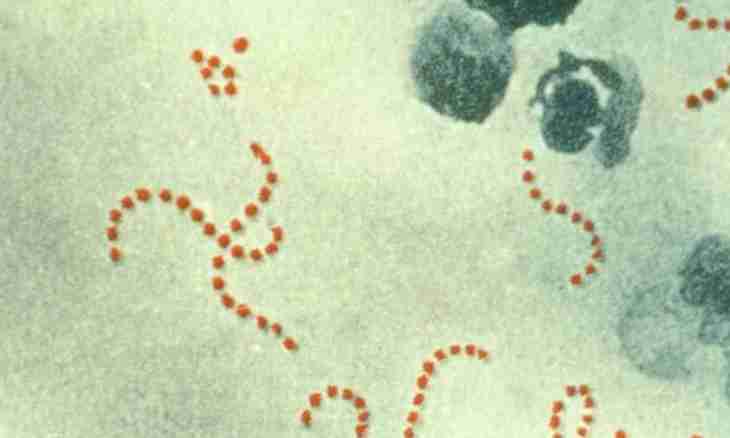Scarlet fever – an infectious disease with which can ache both adults, and children. Its activators are group A streptococci. Scarlet fever extends in the airborne way. The disease constitutes danger because of the caused complications which can affect heart, kidneys or the central nervous system.
Causative agents of scarlet fever
The causative agent of this dangerous infectious disease is the streptococcus having complex anti-gene structure. On the serological group it belongs to And, playing the main role. In total about 60 types of bacteria enter into group A. It is considered that all of them can provoke scarlet fever.
The main danger is that streptococci of group A produce the toxins consisting of two fractions. One of these fractions causes also allergic reaction. Bacteria of this group differ in the increased survivability, they are rather resistant to drying and low temperature impact. And here temperature over +56 degrees cause their mass death, as well as usual disinfectants.
Development of a disease
The incubation period of a disease is usually 5-7 days. The first clinical manifestations look as a common tonsillitis which can be followed by rhinitis, sinusitis and purulent otitis that increases duration of that period when the patient is especially dangerous to people around. In certain cases the people who are in close contact with the patient without having been infected, become distributors of an infection. As a rule, scarlet fever suddenly, begins with sharp temperature increase. The disease is followed by the general weakness and an indisposition, tachycardia and a headache. Almost at once there is also a sore throat preventing to swallow. Except a clinical picture which is typical for a banal tonsillitis the vomiting and a diarrhea, as a result of effect of toxins can be observed. For the first or second day of a disease there is rash on a body, and at temperature increase of the patient can begin to rave. For 4-5 day in language characteristic nipples, color mucous appear becomes bright crimson. The disease begins from 3-6 days to decline: temperature gradually returns to normal, rash turns pale and disappears, the pharynx is cleaned, and the general condition of the patient improves, appears appetite. Usually for 8-10 day he already recovers, and reminds of the postponed disease only skin peeling which begins for 6-8 day after an onset of the illness.
Spread of scarlet fever
Sources of spread of an infection are already infected people, especially in the first 10 days after an onset of the illness when during cough and sneezing they strongly allocate bacteria in surrounding space. Most often infection happens within that room where there is a patient. Also those things which he uses can constitute danger. Theoretically there is a possibility of spread of an infection through toys, ware and linen as bacteria can exist in a dehydrated medium.
